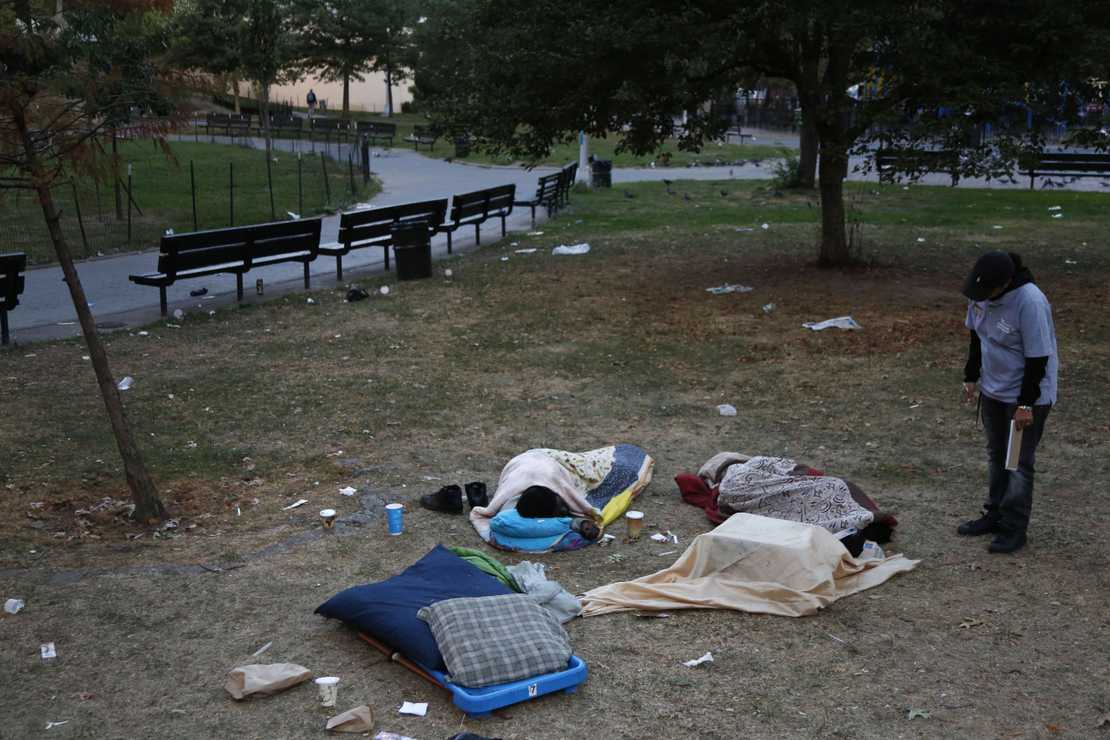New York City Mayor Eric Adams is getting desperate about the city’s mentally ill homeless crisis. He has now directed police and emergency personnel to hospitalize more mentally ill people even if they don’t appear to present a threat to themselves or others.
“The common misunderstanding persists that we cannot provide involuntary assistance unless the person is violent,” Mr. Adams said. “This myth must be put to rest. Going forward, we will make every effort to assist those who are suffering from mental illness and whose illness is endangering them by preventing them from meeting their basic human needs.”
This is turning back the clock on treating the mentally ill, but there’s no sane alternative. The specifics of the mayor’s plan will likely get him in trouble with homeless advocates and mental health professionals, but the spike in attacks by homeless people on others demands something be done.
The city said it would roll out training immediately to police officers, Emergency Medical Services staff and other medical personnel to “ensure compassionate care.” But the city’s new directive on the policy acknowledges that “case law does not provide extensive guidance regarding removals for mental health evaluations based on short interactions in the field.”
Indeed, any involuntary incarceration can be challenged because the city is taking a shortcut through the Constitution. The courts would frown on the lack of due process no matter what other law is invoked to achieve the goal of incarcerating the severely mentally ill homeless.
Asked about the legality of holding people involuntarily, Brendan McGuire, chief counsel to the mayor, said on Tuesday that people would be held under a state mental hygiene law that allows for involuntary commitment if they are a threat to themselves or others. Mr. McGuire said that workers would assess people on a “case by case” basis, including whether they were able to provide basic needs such as food, shelter and health care for themselves.
Adams says that police and other first responders would go through a training program before being allowed to make a judgment about whether or not someone should be involuntarily committed. But should someone with only a few weeks of training be allowed to make a decision to commit someone? Giving the homeless a warm place to sleep and a few meals is one thing. But committing someone for what would almost certainly be long-term care is a decision that only a trained professional can make.
And even if the professional concurs, where are they going to put this patient? Psychiatric beds in hospitals are hard to come by, and the mayor’s plan will no doubt put an inordinate amount of strain on the city’s psychiatric resources.
On the other side of the argument are the mental health professionals. The city’s public advocate, Jumaane Williams, released a report criticizing the mayor’s efforts to help citizens with serious mental problems, saying that Adams relies too much on the police.
The report found that the number of mental health crisis centers and mobile mental crisis response teams had fallen since 2019. It also found that the police rather than behavioral health professionals were still the city’s main option in responding to mental health emergencies even though police officers were not receiving sufficient training, and that the mayor had cut funding to a program that dispatched mental health professionals, rather than the police, to certain emergencies.
One advocate for the mentally ill claims the mayor’s plan would prove to be “counterproductive.”
“The mayor talked about a ‘trauma-informed approach,’ but coercion is itself traumatic,” said Harvey Rosenthal, chief executive of the New York Association of Psychiatric Rehabilitation Service.
If we’re going to treat the mentally ill with kid gloves because we might hurt their feelings, I believe the overwhelming majority of citizens would prefer that coercion should allow the police to use whatever force is necessary to get the job done.
The reason that society stopped incarcerating the mentally ill was because of the extraordinary inhumane abuses in asylums and hospitals. One Flew Over the Cuckoo’s Nest told a story that was a decade removed from the initial reforms in mental institutions but still shocked the senses at the time. If we’re not going to incarcerate the severely mentally ill and we’re not going to allow them to live among us as homeless people — a threat to us and themselves — then what are we to do with them?
Spending tens of billions to build housing for them seems idiotic when most homeless people prefer the streets. It’s a problem where advocates have to take a step back while the rest of us have to take a step forward.
